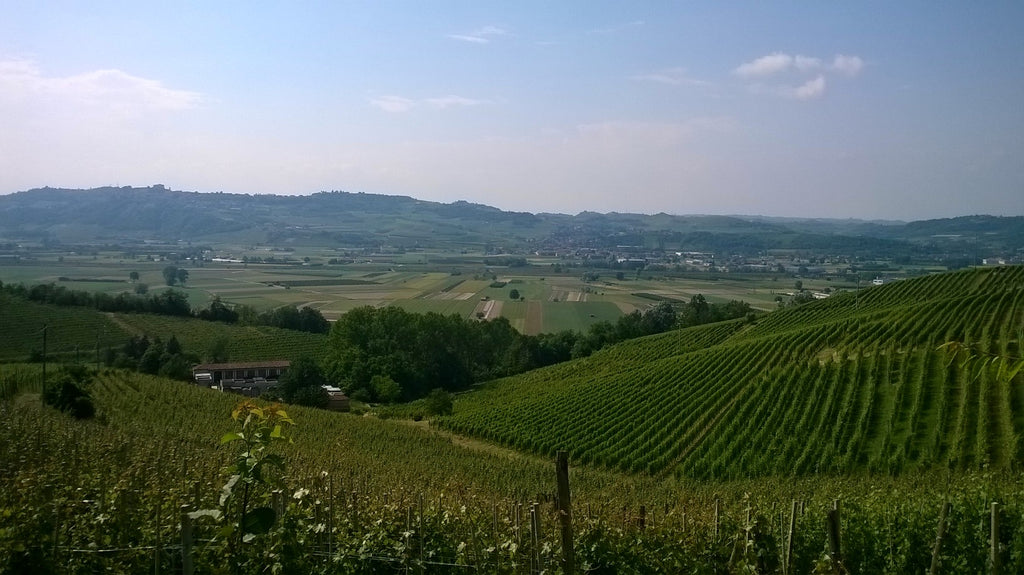What attracted me to Piemont, Italy

I'm going to be honest I didn’t really know what I was getting myself into at the time. Studying and working as a sommelier you get a chance to taste wine from many different wine regions around the world. For some reason Italy as a whole has always been very exciting to me: the history, food, wine, and culture. I remember working in a restaurant where we had wines from all over Italy, but I always got most excited when we could taste wines from the Piedmont region. This region is also a little daunting to truly understand as a sommelier. In terms of yes it is all the same principal grape variety, the Nebbiolo, but the different towns, wine regions within, all the different kinds of producers, and we mustn’t forget the over 200 vineyards which all have a different terrior, soil, and exposure, make for a complex environment. You kind of end up with a head full of stuff! I’m not going to even get started with all the different grape varietals that are native to this area other than Nebbiolo.
So I realized the best way to learn about this region was for me was to come and visit. I had the opportunity to work in a winery in the area of Barbaresco as an intern, and had a wonderful experience. I had a chance to visit many producers in my three-month stay, and got to know a bit about the area. I had fallen in love, and from that point have decided to call the rolling Langhe hills my home.
Barolo
In the area of Barolo you have eleven villages that make up the winemaking region. In order to make the wine that goes by the same place name, you will need to harvest 100% Nebbiolo grapes from vineyards within the boundaries of Barolo, and this wine must be aged in oak for a minimum of 18 months. Then on the fourth year after the harvest you can apply for the certificate authorizing that the wine complies with the regulations of Barolo, and once you get the seals you can sell the wine as Barolo. Within those eleven villages there are many wonderful things to see and do. There is an overwhelming amount of wonderful restaurants to visit and just as many amazing wineries. If you are planning to venture out on your own please keep in mind that a visit to a winery with tasting will usually last about two hours. Lunch also is a very important meal to the Italians, that typically is enjoyed between the hours of noon and two and if you don’t arrive before 2pm it will be very hard to find a kitchen that is still serving.
Barbaresco
Barbaresco is a smaller area compared to Barolo, with only four villages making up this region. In order to call your wine Barbaresco you will need to harvest Nebbiolo grapes from vineyards within the designated borders of Barbaresco and the wine must be aged in oak for a minimum of 9 months. Then, on the third year after the vintage, you can apply for the certificate authorizing the wine complies with the regulations of Barbaresco, and once you get these seals can sell the wine by this name.
Both Barolo and Barbaresco are made with the grape Nebbiolo. Both regions have taken the name from the town where the wine was first produced. Barolo has received its name from the local aristocrat, Marchesa Giulia Falletti di Barolo, who was in love so much with the wines that were produced from the Nebbiolo grape that in 1850 had decided to give the name of the place to the wine. Where in Barbaresco the year of importance was 1894, when Domizio Cavazza, the president of the famous enology school in Alba, who was a resident of Barbaresco, created the first cooperative in the area. He understood that even though the wines were made from the same grape as in Barolo there was a distinct difference between the terroir of the two regions.
Visiting the Piedmont Region
For those of us who cannot come to explore the Langhe region for months a time and would like to see and do as much as possible in a shorter period of time, here are some things to keep in mind. Piedmont is relatively untouched by tourism in comparison to other parts of Italy and so English is rarely spoken. I recommend going with a guide who will be able to help you with translation and communication. They will also be able give you insight to the area and help get you to your wine appointments on time. Driving in these parts is not the easiest with many windy roads, and if you plan to enjoy a bit of wine during the tastings things can get complicated. I recommend having someone who is the designated driver. If you do plan to hire a guide they will be able to plan the best possible wineries to visit to give you some diversity so you can get more out of your short trip.
Amanda is an expat who now calls the Piedmont region her home. She has started up a touring company called Amanda’s Wine Adventures and has been working and helping many people learn and enjoy as much as possible about the Langhe region of Italy.
Read More On The Piedmont Wine Region:

Laisser un commentaire
Ce site est protégé par hCaptcha, et la Politique de confidentialité et les Conditions de service de hCaptcha s’appliquent.